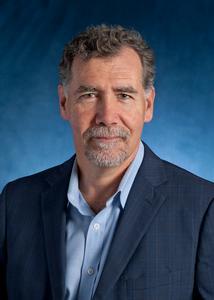Two Doses or One? Let’s Stick To the Data

Chris Beyrer, MD, MPH, Desmond Tutu Professor in Public Health and Human Rights at the Johns Hopkins Bloomberg School of Public Health
With COVID-19 surging and a chaotic political situation, we still have reasons to consider ourselves fortunate.
We have two safe and effective COVID-19 vaccines authorized for emergency use by the U.S. Food and Drug Administration. While the rollout has been frustratingly slow thus far, these vaccines and others under study hold our best promise of pandemic control.
Both products, the Pfizer-BioNTech and the Moderna vaccines, are based on novel mRNA technology, and both were shown to be highly effective in large clinical trials in preventing COVID-19 illness and severe COVID-19 disease.

Larry Corey, MD, leader of the COVID-19 Prevention Network (CoVPN) Operations Center; Professor of Medicine and Virology at University of Washington and a Professor in the Vaccine and Infectious Disease Division, Fred Hutch
Both were studied as two-dose regimens. The Pfizer vaccine is given as two doses 21 days apart, and the Moderna vaccine is given as two doses 28 days apart.
The two products work remarkably similarly as two-dose vaccines.
With both vaccines, the goal was to be well above the antibody levels of persons who recovered from the natural SARS-CoV-2 infection. Essentially, we were aiming to show that vaccines could trigger the production of even more antibodies than the body would normally produce from a natural infection.
That is exactly what we saw with these vaccines.
The Phase I trials showed it took two doses of mRNA to get above these natural levels. This is the basis for the two-dose regimens that were eventually tested, and shown to be so effective at preventing illness.
Both scientific papers on the Pfizer/BioNTech and Moderna vaccines show the vaccines appear to start working 10-12 days after the first dose. These trends, which show protection for people on vaccine compared with people who got a placebo, are extended out for the next four months.
Over time, protection increases. The data after 21 days for the Pfizer vaccine or after 28 days for the Moderna vaccine, however, show the results of the second dose, since everyone in these trials received two doses.
Since no large trials have been run with a single dose, we simply don’t know how effective a single dose might be.
There’s a reason why the first big trials looked at two-doses, not just one. Vaccine regimens are selected based on empirical studies of immune responses, first in animals, and then eventually, if the products pass safety and immune response tests, in human volunteers.
Both the dose (how much of a vaccine is given) and the regimen (one, two, or three doses, and how far apart) are carefully selected based on these kinds of studies. Then, we go into the field with our best estimate of dose and regimen, and study how the vaccines work in real people with real exposures to the diseases we are trying to prevent.
In the case of the mRNA COVID-19 vaccines, we studied two-dose regimens, spaced by 3 or 4 weeks. That is what we know from the data from the vaccine efficacy trials.
That said, we are learning more about these products every day. Safety data continue to be gathered. Each day, we understand more about the ‘real world’ logistical challenges of using these products.
The pressure to get more people immunized is driving some decision-makers to move toward single-dose use, or to stop withholding vaccines – as U.S. Department of Health and Human Services Secretary Alex Azar announced last week – which has an impact on the certainty of available second doses for all who have had their first doses.
President-Elect Joe Biden has also stated he would press for release of all available doses and no longer hold back vaccine doses to make certain that everyone who got a first dose will be able to get the second dose on schedule. Neither is suggesting that one dose is enough – but both approaches are gambling that product manufacturing will keep up with demand, and that by extension it would be acceptable to have some persons vaccinated with second doses after longer windows than the current FDA-approved 21 or 28 days.
To be clear, the findings from the clinical trials in tens of thousands of volunteers is that these vaccines work as two-dose regimens with tight time intervals between doses.
Everything else is speculation.
Until we have the empirical evidence to suggest it would not reduce safety or efficacy to make a change in the dosing and regimen, two spaced doses are what has shown such high efficacy.
While there is urgency to accelerate the COVID-19 vaccine rollout, and to immunize more Americans who want and need these vaccines, there are real risks to the effectiveness in changing anything about their current recommended and authorized use.
A corollary of the two-dose response to the mRNA vaccines that is also increasingly being asked is how closely to 21 or 28 days does one need to be to give the second dose? The answer is another unknown. But in general, waiting for a boost is often associated with higher responses.
So getting a boost at 2 months, while unproven, would compare well with other vaccine platforms and will likely be able to spur the kind of antibody production we know is sufficient to protect against illness. The key issue with delaying the second vaccination is really how good, and how long, a first vaccination alone will work. That answer is unknown. Getting the second dose, from a policy point of view, is imperative.
With the AstraZeneca-Oxford vaccine candidate, the trials in the US, UK and elsewhere have also studied two-dose regimens. This two-dose regimen was what the UK approved for Emergency Use Authorization in December. But again, some decision-makers in the UK are pressing to deliver this product as a single-dose vaccine.
The argument from policymakers is that a single-dose represents a reasonable trade-off. If you give a single dose to a larger percentage of the population, it might be better at blunting the spread of the pandemic than giving a two-dose regimen to a smaller group of people.
But this too is a problematic framing of the issues.
We don’t know that one dose is effective, or for how long. Having a large number of people partially protected, particularly during periods of high COVID-19 transmission, could end up benefiting variants of the viruses that can bypass the weak or partial protection from incomplete immunizations.
The combination of partial protection, and loosening of social distancing precautions, could end up undermining the effort to control the pandemic. A decision of this gravity has to be made based on empirical data from human vaccine trials, not on modeling or other speculative approaches, and certainly not on political considerations or expediency.
The current COVID-19 vaccines that we have developed so quickly are precious resources. We must use them wisely and protect their efficacy. This calls for fidelity to the science, ongoing and rigorous research, and the great patience that COVID-19 has demanded of us all.
We need to ramp up immunizations as quickly as is humanly possible, and we need to get many more vaccines into people’s arms. But for a two-dose vaccine regimen, that means getting two doses, spaced apart as our data suggest, to ensure that people are truly protected.
Chris Beyrer, MD, MPH is the Desmond Tutu Professor in Public Health and Human Rights at the Johns Hopkins Bloomberg School of Public Health. A professor of Epidemiology, Nursing, and Medicine, he now serves as Senior Scientific Liaison to the COVID-19 Vaccine Prevention Network, and as co-editor of this blog series.
Dr. Larry Corey is the leader of the COVID-19 Prevention Network (CoVPN) Operations Center, which was formed by the National Institute of Allergy and Infectious Diseases at the U.S. National Institutes of Health to respond to the global pandemic and the Chair of the ACTIV COVID-19 Vaccine Clinical Trials Working Group. He is a Professor of Medicine and Virology at University of Washington and a Professor in the Vaccine and Infectious Disease Division and past President and Director of Fred Hutchinson Cancer Research Center.




